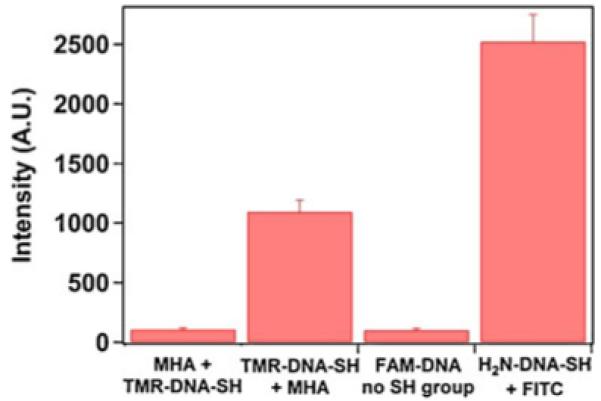Fig. 9.

Fluorescence of the maleimide functionalized Si wafers after reactions with modified DNA. The two controls were (1) MPTES surface blocked with MHA and then reacted with 100 nM of 5′-TAMRA and 3′-thiol-modified DNA (MHA+TMR-DNA-SH) and (2) MPTES surface reacted with 100 nM 5′-FAM oligonucleotide without a 3′-thiol group (FAM-DNA no SH group). One hundred nanomolar 5′-TAMRA and 3′-thiol-modified DNA deposited on a maleimide silane surface followed by the reaction with MHA (TMR-DNA-SH+MHA) showed an approximately 10-fold increase in intensity compared to the two controls. One hundred nanomolar 5′-thiol and 3′-amine-modified 150-mer model DNA deposited on MPTES and reacted with FITC displayed a 20-fold increase in fluorescence compared to the two controls. Treatment of MPTES surfaces by FITC solution without the DNA attachment step resulted only in background fluorescence
